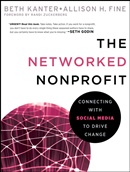 In 2006, Time magazine named an ordinary internet user Person of the Year. The same year Chris Anderson, now editor of Wired magazine, wrote his first bestseller, The Long Tail, which suggested that the future of entertainment is in millions of niche markets. It had a huge impact on the minds of small business people struggling to compete with big retail chains. In short, the internet has changed the world, with the launch of services like YouTube in 2005 bringing easy access to mass communication and expression to thousands who just a dozen years ago were seen by huge media holdings as mere consumers of news and entertainment.
In 2006, Time magazine named an ordinary internet user Person of the Year. The same year Chris Anderson, now editor of Wired magazine, wrote his first bestseller, The Long Tail, which suggested that the future of entertainment is in millions of niche markets. It had a huge impact on the minds of small business people struggling to compete with big retail chains. In short, the internet has changed the world, with the launch of services like YouTube in 2005 bringing easy access to mass communication and expression to thousands who just a dozen years ago were seen by huge media holdings as mere consumers of news and entertainment.
If the landscape of business and entertainment has changed so radically, how can non-profits benefit from the rise of the new technology? Beth Kanter and Allison Fine suggest detailed answers, based mainly on their in-depth experience as civic leaders. The Networked Nonprofit is easy to read and thought-provoking. I made dozens of underlinings and marginal notes while reading.
Who does this book address? It is probably not for someone who is about to open a front web page of Twitter or Facebook for the first time in his/her life, nor for those who use social networks exclusively for chatting or getting back in touch with classmates. But this book will be a discovery for those who intuitively feel social media could play a much bigger role than endless surfing of the web.
The book is divided into two main parts. In the first part readers learn about the principles of being a networked non-profit. The authors provide thoughtful observations, based on their experience in leading US non-profits. The second part describes how to act as a networked non-profit and chronicles brilliant cases of rebuilt organizations.
Social media could have a tremendous impact on your organization, argue Kanter and Fine. If your non-profit is doing a good job, why should it hide its successes? Let others get into your desktop and spread the word about your plans and visions. Listen, call for action, invite the crowd, share your ambitious plans with your supporters. As the authors argue, ‘social media use and listening have become a part of developing programs.’
Social media for non-profits is on the move. At the same time, a lot of organizations still do not go public. Being in the box, they are suspicious of the effectiveness of open discussion, want ‘to protect the organization, stay on message and avoid criticism online’.
Social media is not about losing control of your non-profit, but rather about hearing thousands of voices, thus reinventing the definition of the voice of community. As Kanter and Fine note, ‘individuals share their personal stories in their own words, images and videos. The organization facilitates some of these conversations but it also lets them go where people want them to go.’
The authors strongly believe that the world they live and work in is not a hostile environment but a solidarity-oriented one, and that ‘people are good and helpful’. The perennial issue is how to move the hearts of those people and engage their time and resources. The answer is simple: address the needs and values of your prospective supporters. Scott Harrison with his clean water project touches a chord with millions – clean water is taken for granted by people in the western hemisphere, but it is an issue of life and death for African countries. Through social media, the call for action can spread among millions. And everyone can keep an eye on the achievements of campaigns through a campaign dashboard or Facebook page.
What is great about the book is that Kanter and Fine do not overestimate the role of social media. They note that ‘social media tools cannot make friendship’ and that much activity should take place offline. It remains, however, a powerful tool for all societies. In countries like Ukraine with 20-30 per cent internet penetration, and the number of Twitter and Facebook users doubling each year, Twitter is a powerful tool of civic oversight and alternative informing on elections. Ukraine was the first country in Central and Eastern Europe to haveTwitter broadcasting of elections (#elect_ua), which brought together hundreds of bloggers and journalists to report on the election process and possible frauds. The future is here, in the hands of active citizens and community-building efforts by non-profits.
Vitaliy Moroz is head of new media at Internews Ukraine, a non-profit media organization based in Kyiv, Ukraine. Email vitaliy.moroz@gmail.com
The Networked Nonprofit: Connecting with social media to drive change
Beth Kanter and Allison Fine Jossey-Bass $34.95
ISBN 9780470547977
To order
http://www.josseybass.com/WileyCDA





Comments (0)